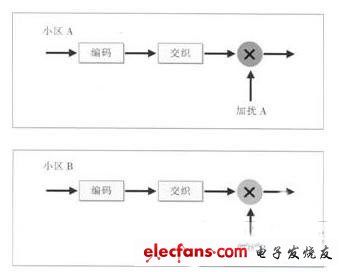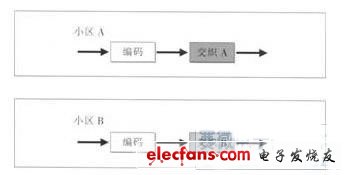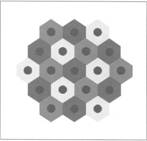0 Preface
With the continuous development of mobile communication technology, users have put forward higher requirements for the content and quality of mobile communication. In order to adapt to the trends of mobile, broadband and IP presented by global wireless communication, and to compete with some emerging mobile communication technologies such as WiMAX and Wi-Fi, at the end of 2004, 3GPP proposed after HSDPA, HSUPA and other technical standards The long-term evolution of 3G (3GLTE). The goal of 3G LTE is to achieve higher data rates, lower latency, improved system capacity and coverage, and lower costs. At the same time, because LTE uses orthogonal frequency division multiple access (OFDMA) access, the information of users in the cell is carried on different carriers that are orthogonal to each other, so the interference comes from other cells. That is, interference between cells. Therefore, interference suppression between cells becomes an urgent problem to be solved. This article introduces the main interference suppression methods currently used by LTE, and compares the advantages and disadvantages of different methods.
1 Introduction to LTE
LTE fills the huge technical gap between the third-generation mobile communication and the fourth-generation mobile communication. The goal is to establish an evolvable wireless access architecture that can achieve high transmission rates, low latency, and packet-based optimization. The LTE system expects to achieve a downlink transmission rate of 100 Mbit / s and an uplink transmission rate of 50 Mbit / s over a 20 MHz bandwidth. The spectrum efficiency is 2 to 4 times that of HSPA. It supports enhanced multimedia broadcast and multicast services and packet switching of all groups. The bandwidth configuration is flexible, the transmission rate of edge cells is significantly improved, and the coverage of the system is enhanced. In order to achieve the above goals, the LTE system adopts a flat network structure that is close to the typical all-IP broadband network, and adopts multiple input and multiple output (MIMO), orthogonal frequency division multiplexing (OFDM), and hybrid automatic request Advanced technologies such as transmission (HARQ) and adaptive modulation coding (HARQ). The uplink of LTE system adopts single carrier frequency division multiple access (SC-FDMA) access method based on OFDM transmission technology. The downlink adopts OFDMA access mode. The access method of 0FDMA is different from code division multiple access (CDMA). It cannot eliminate interference between cells through spread spectrum. The LTE system has high requirements for spectrum efficiency, and it cannot pass the traditional use of higher multiplexing coefficients. Frequency reuse method to reduce interference, therefore, in LTE, inter-cell interference suppression technology is very concerned. At present, the main methods for suppressing inter-cell interference discussed by 3GPP are divided into three types, namely inter-cell interference randomization, inter-cell interference deletion, and inter-cell interference coordination / avoidance.
2 Interference suppression technology in small intervals
The OFDM-specific OFDMA access method allows user information in this cell to be carried on different carriers orthogonal to each other, so all interference comes from other cells. For users in the center of the cell. The distance between itself and the base station is relatively close, and the interference signal distance of the outer cell is farther, the signal-to-interference and noise ratio is relatively large: but for users at the edge of the cell, users who occupy the same carrier resources in the neighboring cell The interference is relatively large and the signal-to-interference-noise ratio is relatively small when it is far away from the base station. As a result, although the overall throughput of the cell is high, the user service quality at the cell edge is poor. Throughput is low. Therefore, in LTE, inter-cell interference suppression technology is very important.
2.1 Interference randomization
For the access method of 0FDMA, the number of interference from external cells is limited, but the interference intensity is large, and the source of the interference changes relatively quickly, which is not easy to estimate. Therefore, the use of mathematical statistics to estimate interference has become a relatively simple and feasible Methods. Interference randomization cannot reduce the energy of interference, but it can randomize the interference into "white noise" by scrambling the interference signal, thereby suppressing inter-cell interference, so it is also called "interference whitening". The method of interference randomization mainly includes cell-specific scrambling and cell-specific interleaving.
a) Cell-specific scrambling, that is, after channel coding, randomly scramble the interfering signal. As shown in FIG. 1, for the cell A and the cell B, after channel coding and interleaving, the transmission signals are scrambled separately. If there is no scrambling, the decoder of the user equipment (UE) cannot distinguish whether the received signal is from the local cell or from another cell. It may decode the signal of the local cell or the signal of other cells, so that the performance reduce. Cell-specific scrambling can distinguish the information of different cells by different scrambling codes, allowing the UE to decode only useful information to reduce interference. Scrambling does not affect bandwidth, but can improve performance.

Figure 1 Cell-specific scrambling
b) Cell-specific interleaving, that is, after channel coding, the transmission signals are interleaved in different ways. As shown in Fig. 2, for cell A and cell B, the interfering signals are interleaved after channel coding. The cell-specific interleaving pattern can be generated by the method of pseudo-random numbers. The number of available interleaving patterns (interleaving seeds) is determined by the interleaving length. Different interleaving lengths correspond to different interleaving pattern numbers. Which interleaving mode to use. Inter-seeds can be reused between cells with a long spatial distance, similar to frequency division multiplexing in cellular systems. For randomization of interference, cell-specific interleaving and cell-specific scrambling can achieve the same system performance.

Figure 2 Community-specific interleaving
2.2 Interference removal
The idea of ​​interference cancellation was originally proposed in the CDMA system. It can demodulate and decode the signal of the interfering cell, and then reconstruct and delete the interference from the cell. Although LTE adopts the OFDM access method, it still introduces the concept of interference removal. There are two main methods for implementing the small interval interference removal.
a) Using the multi-antenna spatial suppression method at the receiving end to perform interference cancellation, the relevant detection algorithm has been widely adopted in the study of multiple input and multiple output (M1-MO).
b) Based on N / Deletion method. Typically, if interleaved multiple access (IDMA) is used to remove inter-cell interference, IDMA can generate different interleaving patterns through a pseudo-random interleaver and assign them to different cells. The receiver uses different interleaving patterns to deinterleave, and the target The signal and the interference signal are separately solved, and then the interference signal is subtracted from the total received signal, thereby effectively improving the introduction of signal-to-interference technology of the received signal and comparing the noise ratio.
In addition, in LTE downlink transmission. The information of interfering signals can be obtained in different ways. When deleting the inter-Node B interference, you can obtain the interference signal information by detecting the interference control signal on the UE side; when deleting the inter-sector interference, the Node B directly uses its own control channel to send the interference signal information to the UE. Obviously, the more interference signal information obtained by the receiver, the better the performance of interference removal.
The advantage of inter-cell interference removal is that there is no limit to the frequency resources at the cell edge. Adjacent cells can use the same frequency resources even at the cell edge, and can obtain higher cell edge spectral efficiency and total spectral efficiency. The limitation is that synchronization must be maintained between cells, and the target cell must know the pilot structure of the interfering cell to perform channel estimation on the interfering signal. For users who want to delete inter-cell interference, they must be allocated the same frequency resources.
2.3 Interference coordination / avoidance
For 0FDMA access mode. The users in the cell center will not be interfered by the users in the cell. The interference source from the outer cell is farther away, so it can achieve better reception. For the users at the cell edge, the interference from outside cells is more serious.
The core idea of ​​interference coordination and avoidance is to restrict the available resources of a cell through inter-cell coordination to reduce the interference of the cell to neighboring cells, improve the signal-to-noise ratio of neighboring cells on these resources and the cell edge Data rate and coverage. The industry has proposed many methods for interference coordination / avoidance. This article will introduce a generally accepted soft frequency reuse scheme.
In this scheme, the subcarriers in each cell are divided into two groups. One group is called the primary subcarrier, and the other group is called the secondary subcarrier. The primary subcarrier can be used in the entire cell range, while the secondary subcarrier can only be used in the center area of ​​the cell (see Figure 3). In this way, the allocation of subcarriers can make the subcarriers used at the border of adjacent cells homogeneous

Figure 3 Schematic diagram of soft frequency reuse
Mutually orthogonal, users using the same frequency subcarriers are far enough away. This effectively avoids or reduces co-channel interference of users at the edge of neighboring cells. For users in the community center. Due to its close proximity to the base station. And the interference received from the external cell is small, so it can be transmitted with relatively low power, and the opposite is true for users at the cell edge. Therefore, in general, the maximum transmit power allowed by the primary subcarrier is higher than the maximum transmit power allowed by the secondary subcarrier. In the case of a fixed power spectral density, more power allocated to the main subcarrier means that a wider bandwidth is allocated to the main subcarrier. The transmission power ratio of the auxiliary subcarrier to the main subcarrier can be adjusted from 0 to 1, and the corresponding effective frequency reuse coefficient varies from 3 to 1. By adjusting the power ratio of the auxiliary sub-carrier to the main sub-carrier, soft frequency reuse can adapt to changes in the service distribution of each cell. When high traffic occurs at the cell edge, the power ratio is set to a relatively small value to obtain higher cell edge throughput; on the contrary, when the traffic is mainly concentrated inside the cell. A larger power ratio can be set.
2.4 Comparison of several interference suppression technologies
Comparing the several interference suppression schemes for the LTE system introduced above, it can be seen that interference randomization continues to use the mature scrambling technology of the CDMA system, which is relatively simple and feasible. But the problem is that the interference is treated as white noise, which may cause measurement errors due to different statistical characteristics. Interference removal technology can significantly improve the system performance of the cell edge and obtain higher spectrum efficiency, but it is not suitable for services with small bandwidth (such as VolP), and it is also more complicated to implement in OFDMA systems. There is not much research on it in the future. Interference coordination / avoidance is a popular technology currently studied, and its implementation is simple and can be applied to various bandwidth services. And it has a good effect on interference suppression, which is suitable for the specific access method of OFDMA, but it improves the performance of the user at the edge of the cell and brings a loss in the overall throughput of the cell. The above three inter-cell interference suppression methods can be combined with each other and complement each other to obtain higher system gain.
3 Conclusion
The LTE system has high requirements on spectrum efficiency. The resulting inter-cell interference problem is an important issue affecting system performance. Randomization of interference, interference cancellation and interference coordination / avoidance as effective inter-cell interference suppression technologies will greatly improve the performance of the 3G LTE system, especially the performance of cell edge users
21-75Kva Diesel Generator,Portable Type Diesel Generator,Home Use Diesel Generator,Shanghai Power Generator Set
Shanghai Kosta Electric Co., Ltd. , https://www.kostagenerators.com
